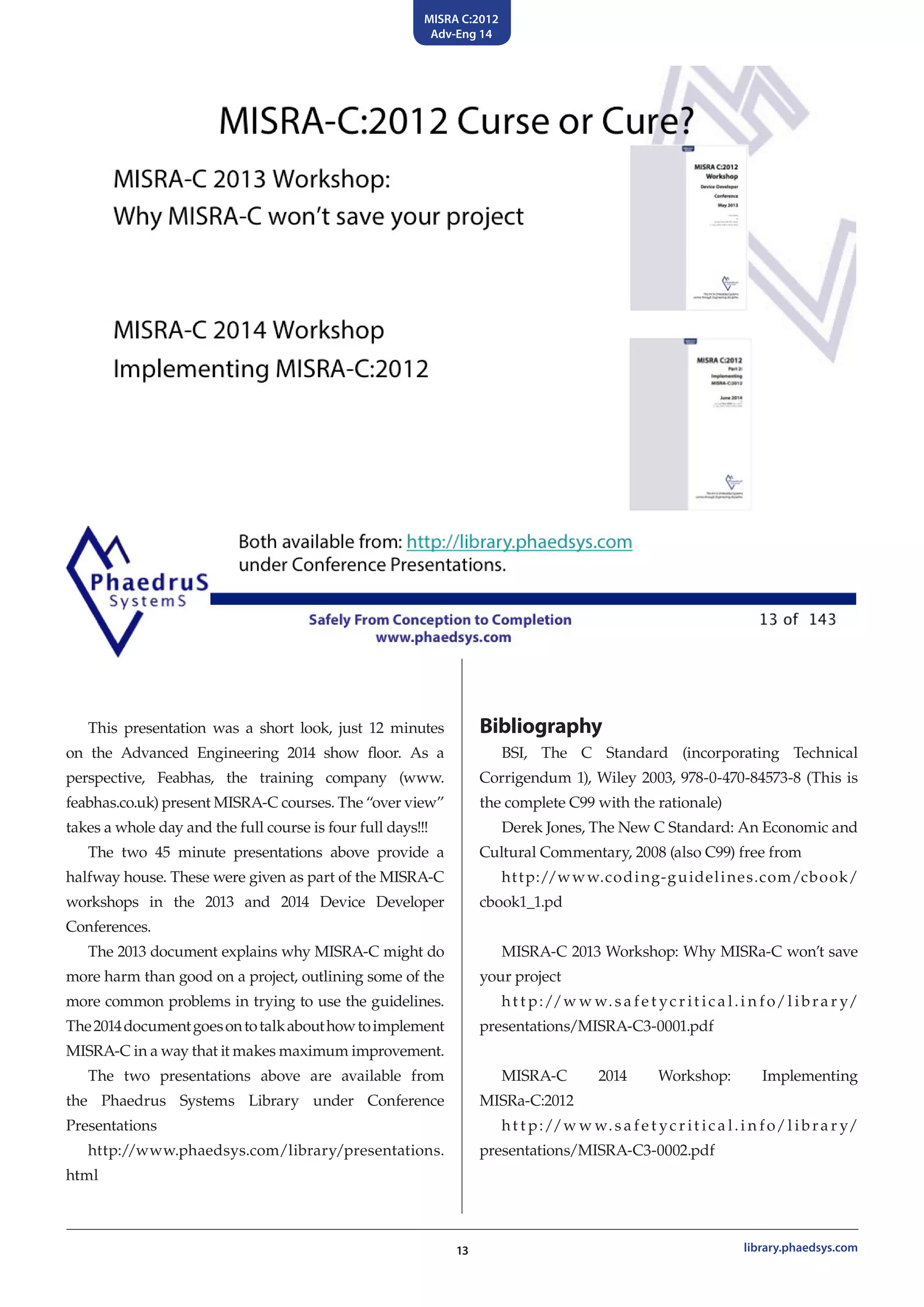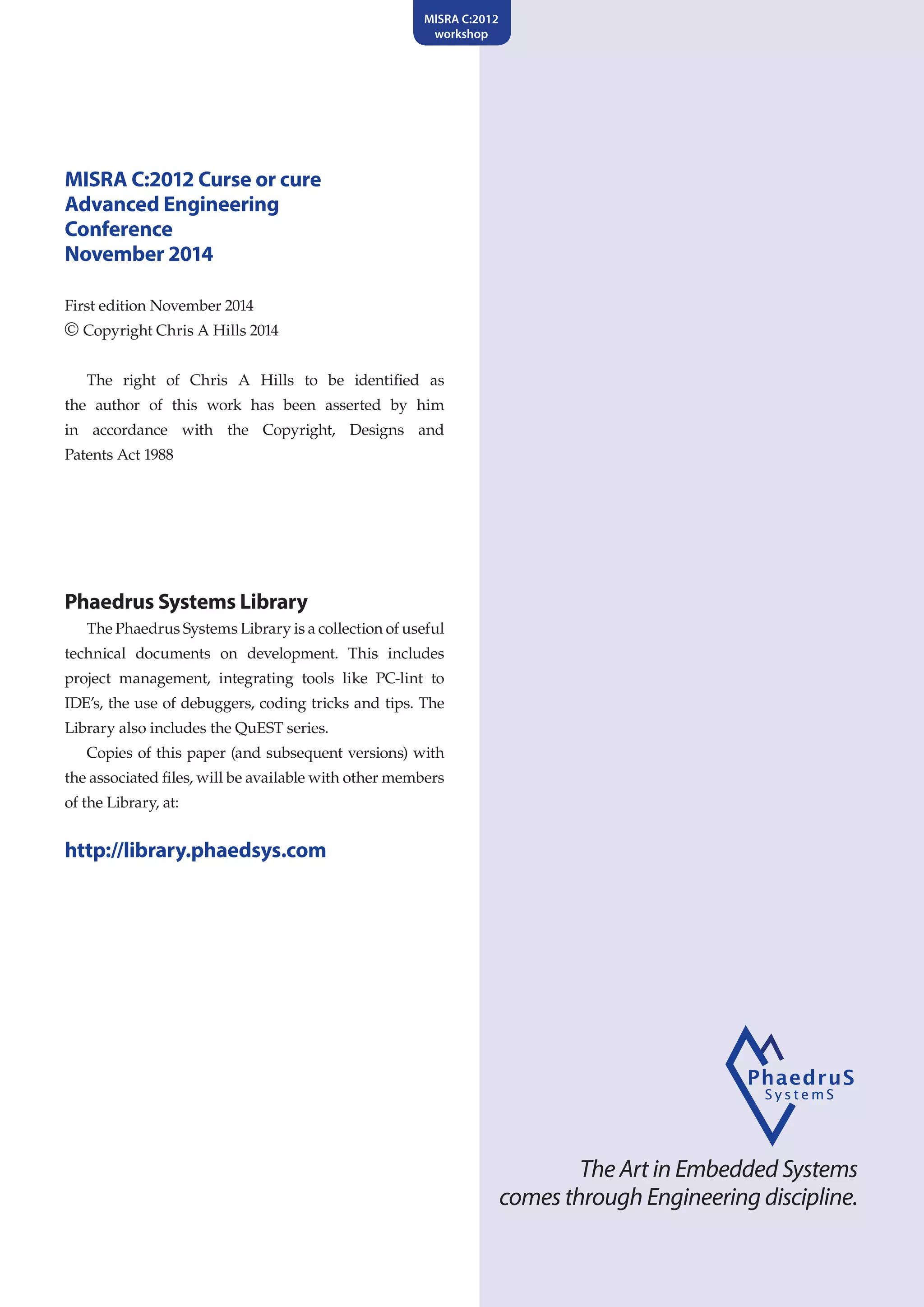This document discusses the MISRA C coding standard and whether it is a "cure or curse" for programming in C. It provides an overview of the history and evolution of MISRA C since its inception in 1996. A key point made is that MISRA C aims to restrict dangerous and error-prone aspects of the C language, but it can be misused if only the headline rules are followed without reading the full standard and explanations. Static analysis is recommended to properly enforce MISRA C rules. While deviations from the standard will be needed for every project, following MISRA C principles can save significant time by reducing defects if implemented correctly.
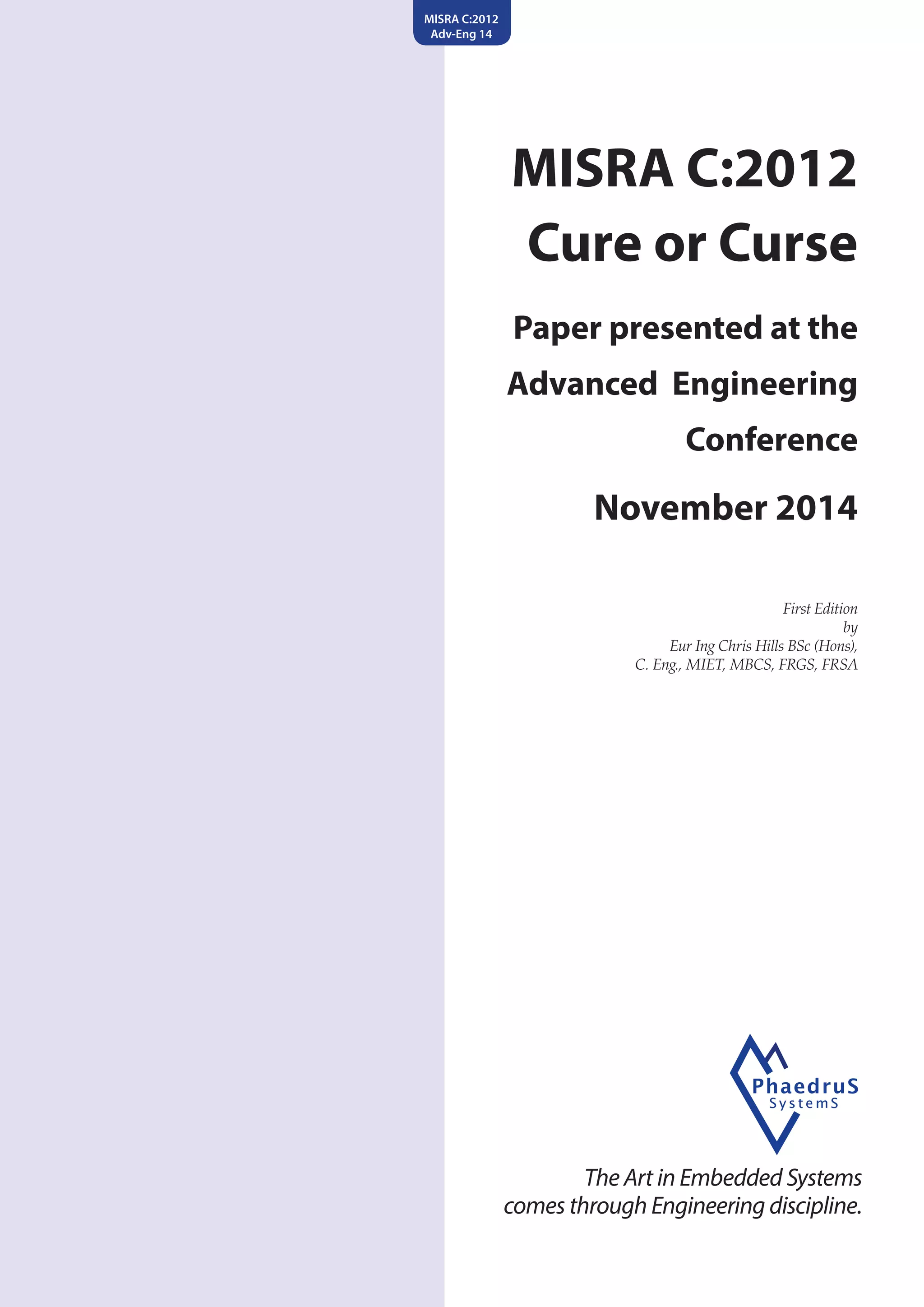





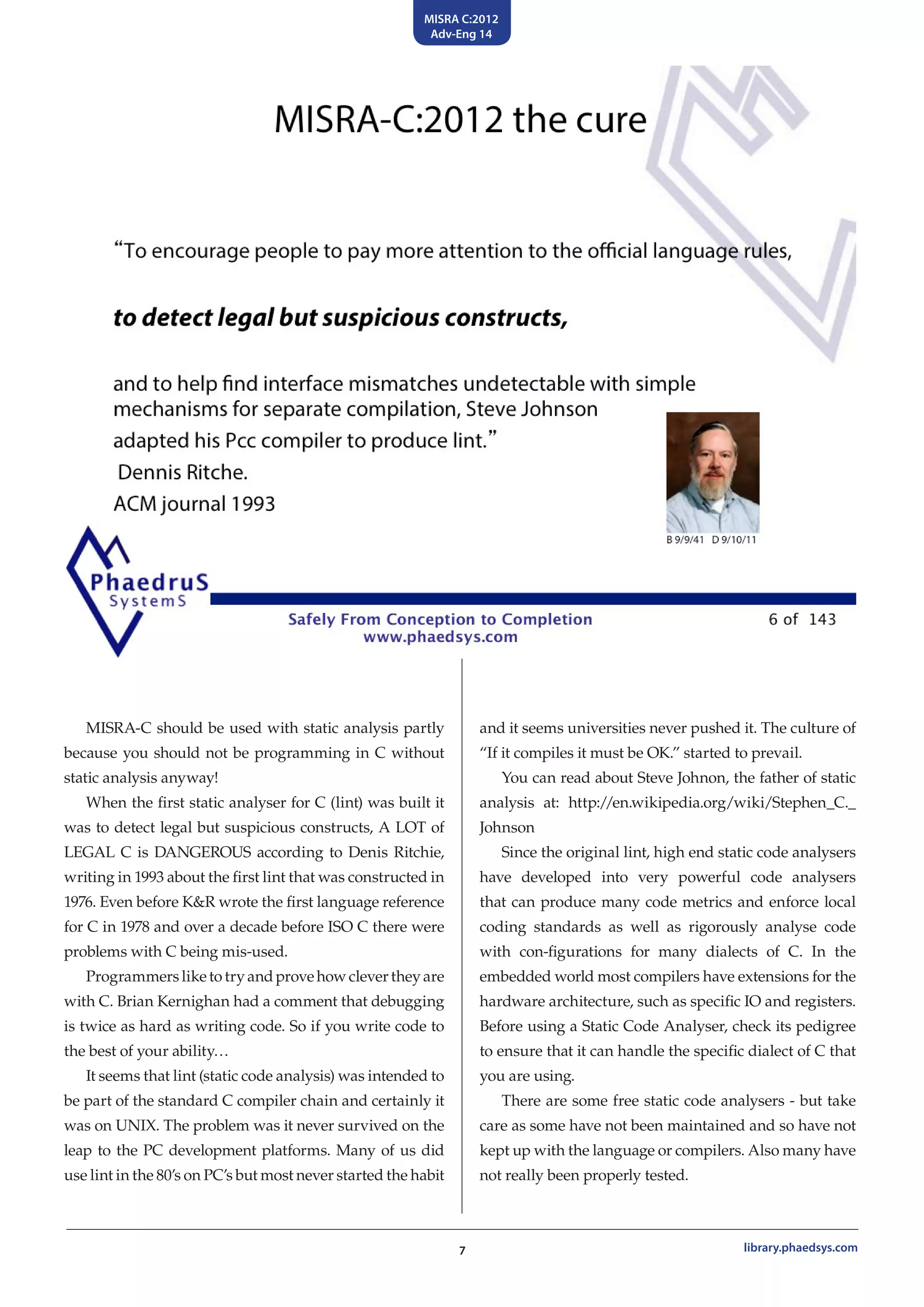
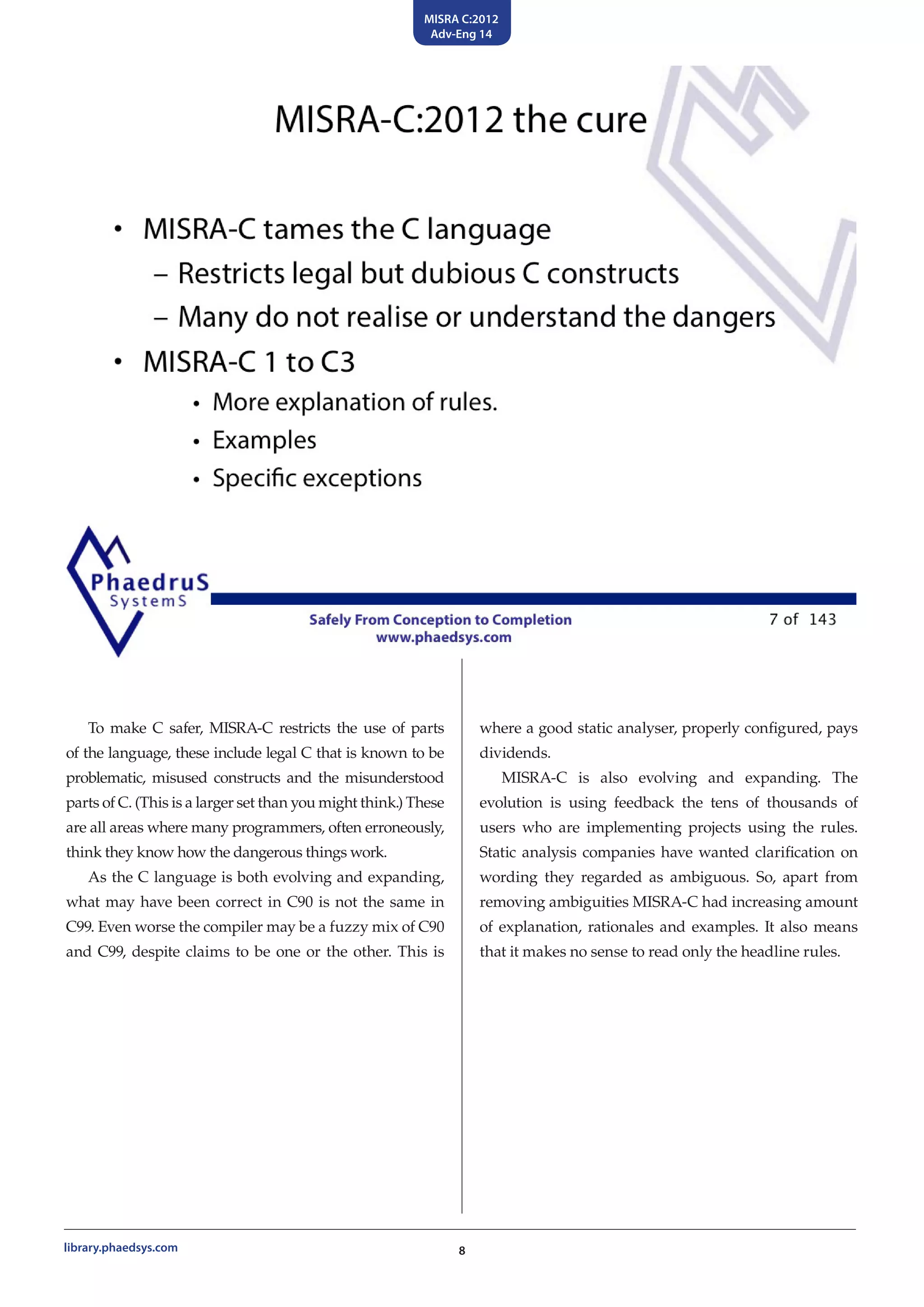
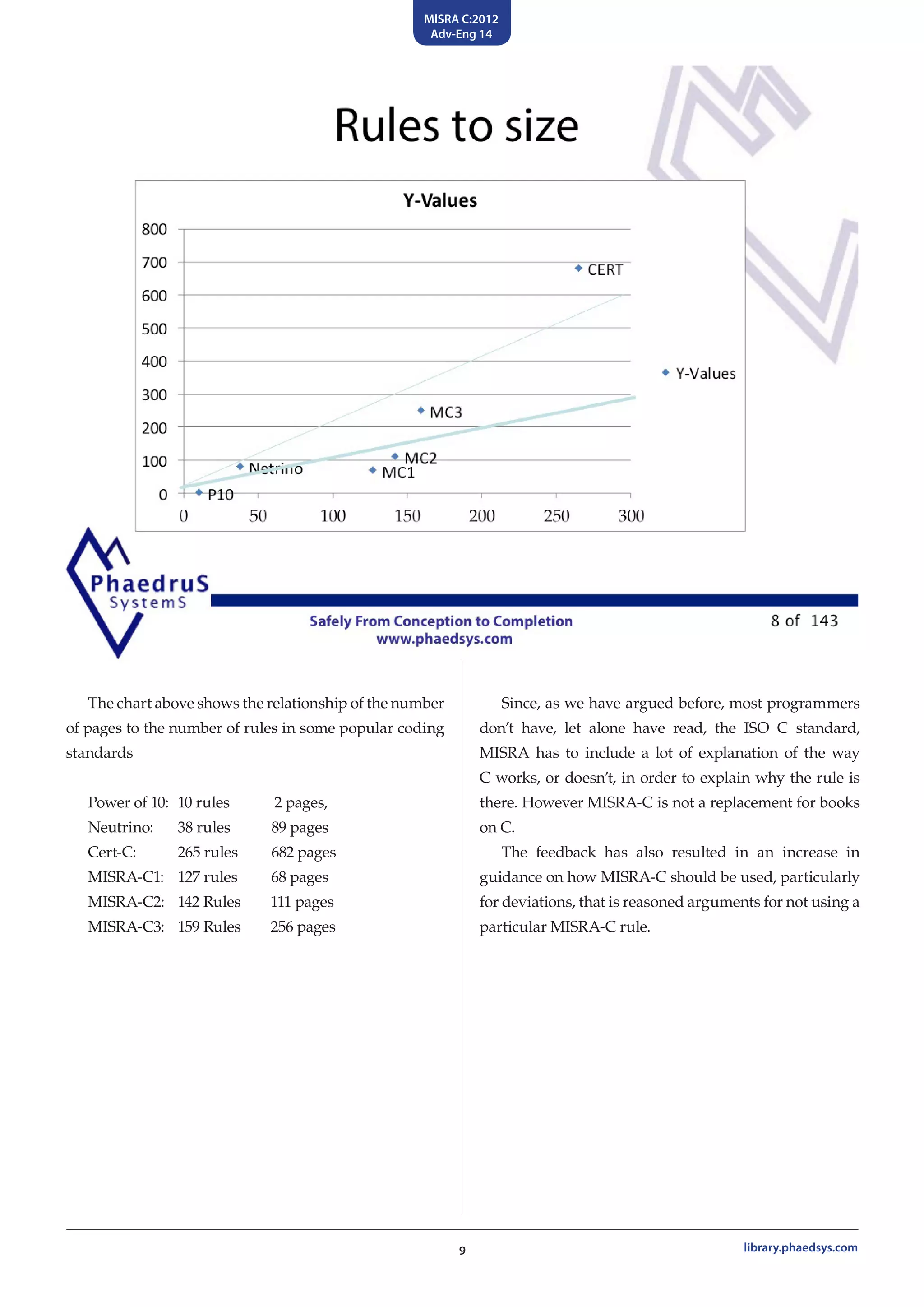
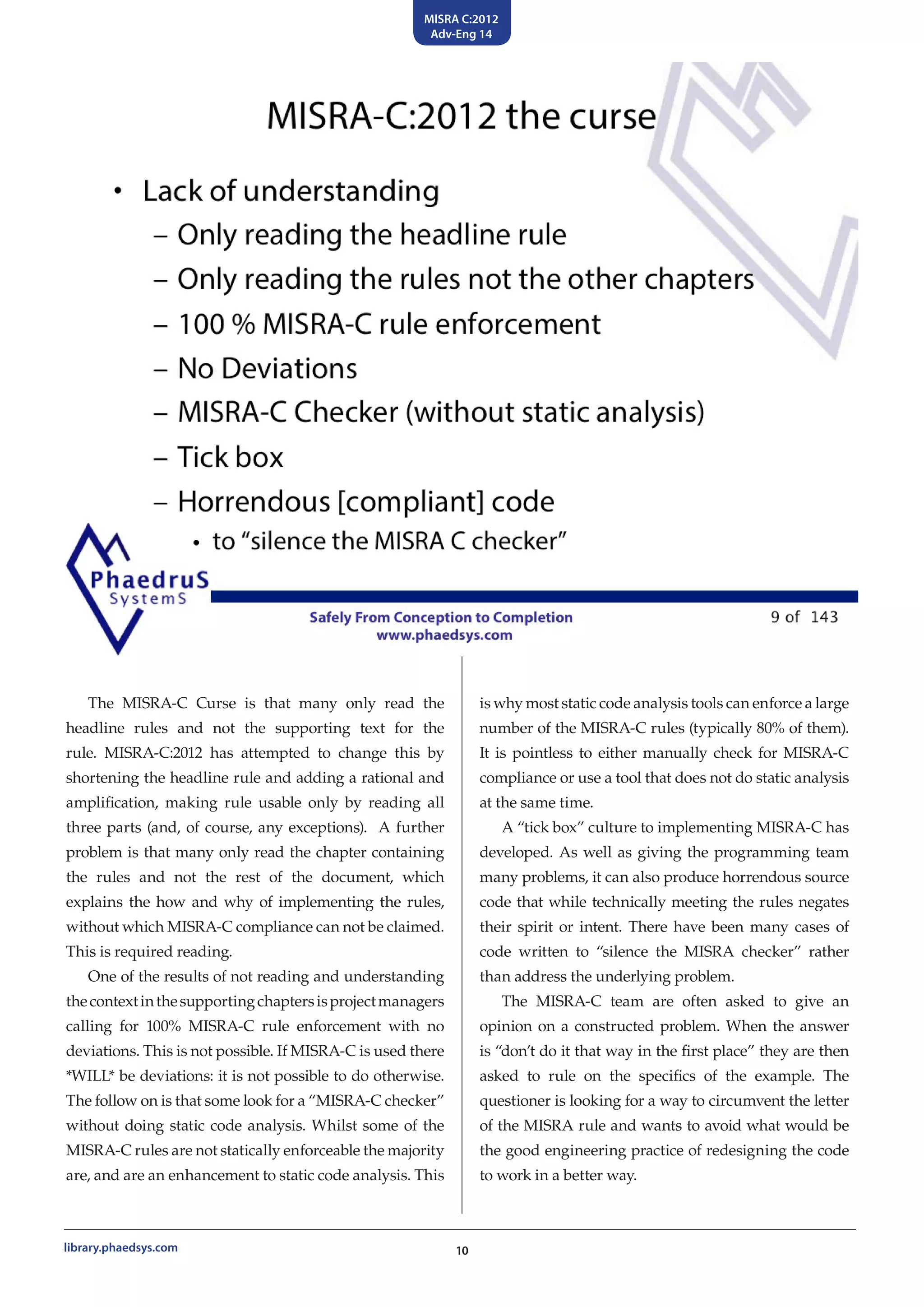
![MISRA C:2012
Adv-Eng 14
11 library.phaedsys.com
Only 6% of the MISRA-C rules are Mandatory: that is
rules that are applicable 100% of the time. Therefore we
hope that 99.9999% of MISRA-C users will deviate the
rules in an appropriate manner.
We are regularly asked about deviations. Firstly we
are asked “How do we deviate?” This is discussed in the
two papers referenced at the end of this paper.
Secondly we hear from people who have been told,
“100% MISRA-C with no deviations. [TICK]” This
instruction is always from people who don’t understand
what MISRA-C is or how to implement it.
This is one of the places where MISRA-C can be
counter productive. A manager demanding 100%
compliance doesn’t realise that he is dangerously
handicapping the project. The team will have to fight
with the standard and resort to time consuming and, in
some cases, dangerous, tricks to get round the warnings
from the code analysers. They will waste time and
produce hideous and less efficient code.
In most presentations on MISRA-C by MISRA-C team
members and tool vendors with MISRA-C checkers, the
speaker will tell the audience you are going to have to
deviate some rules and this is NOT a tick box or simple
decision. It requires thought and consideration. YOU
have to do this on YOUR responsibility and it will be
different for every project.
A4 size Copies of this slide are available signed for
your manager’s office wall!
Deviations WILL be required. Just as the rain must
fall (but too much is a flood).](https://image.slidesharecdn.com/1ea4360b-740b-4100-b046-e54c381aec5a-150116100011-conversion-gate01/75/MISRA-C-curse-or-cure-11-2048.jpg)

